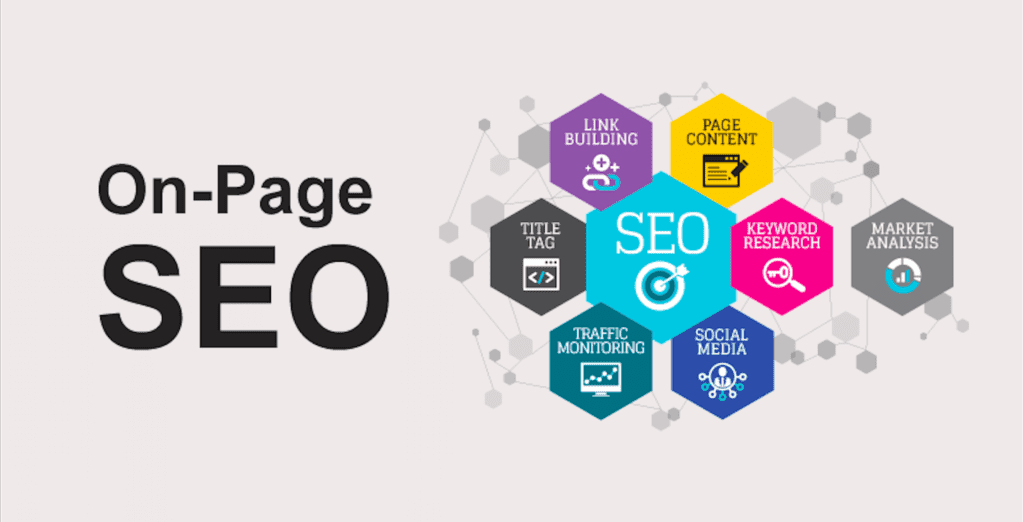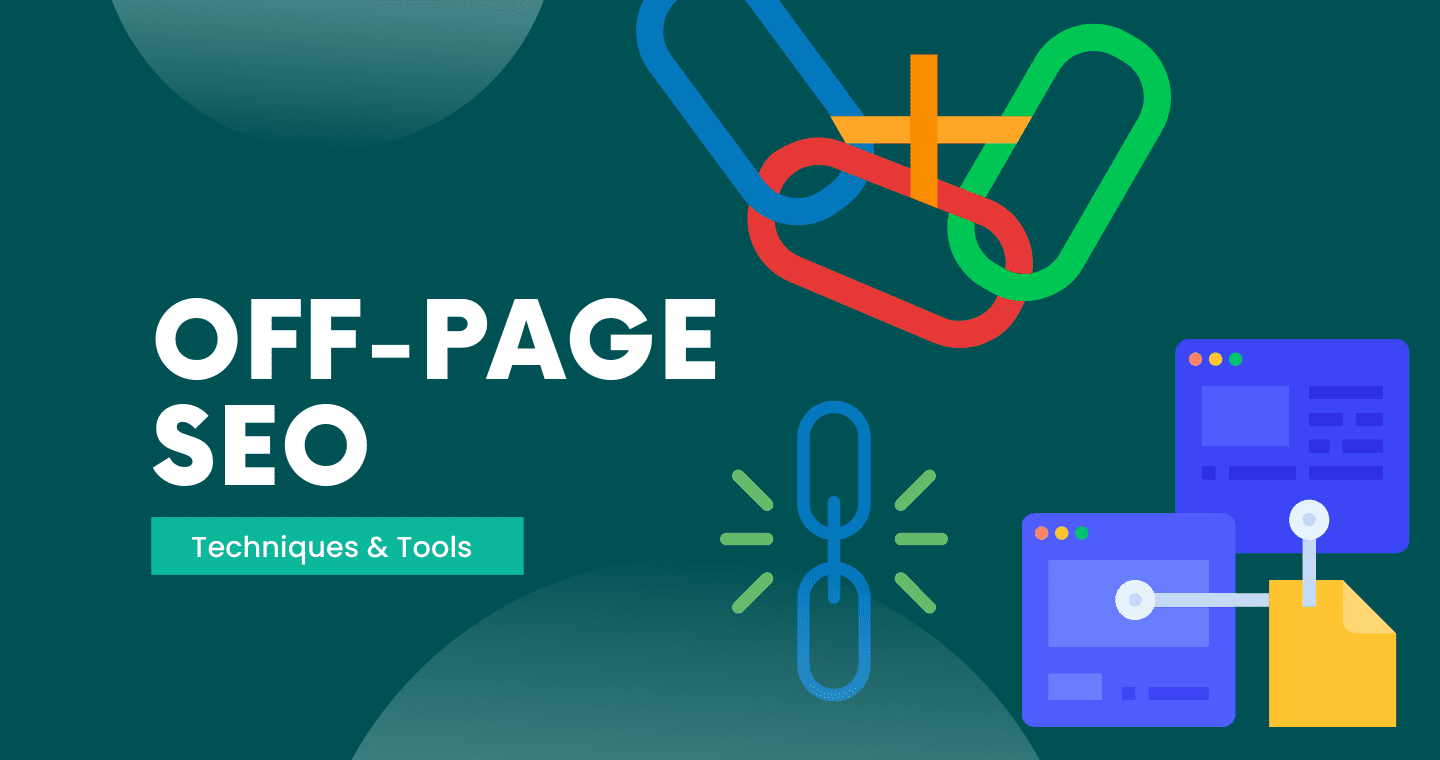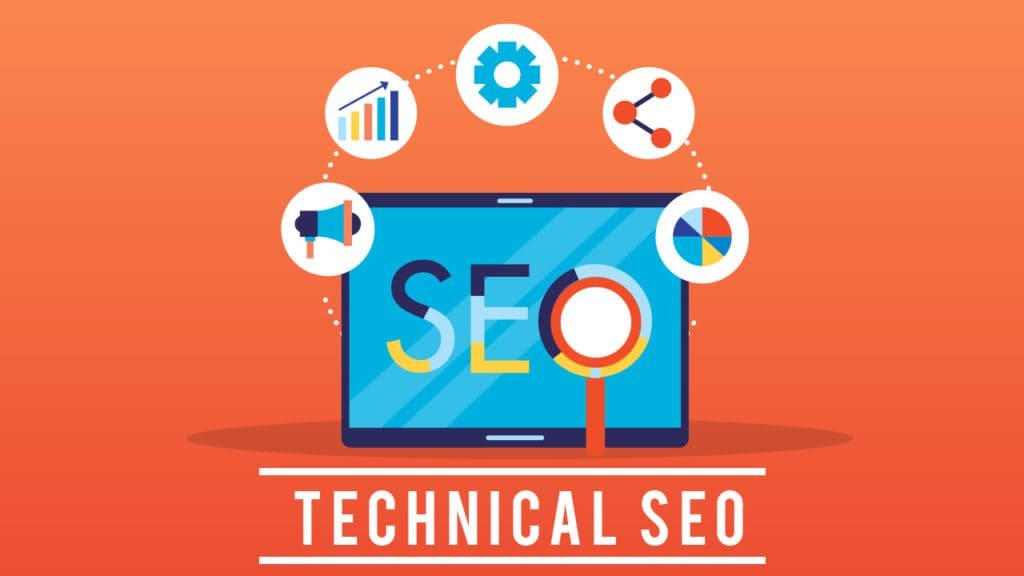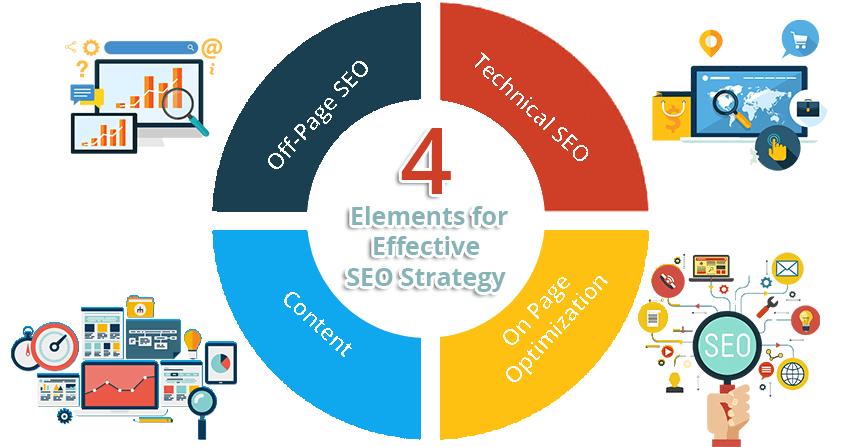Table of Contents
In the ever-evolving landscape of digital marketing, Search Engine Optimization (SEO) stands as a fundamental strategy for businesses seeking to enhance their online presence and visibility. SEO encompasses a diverse array of techniques and practices aimed at improving a website’s ranking in search engine results pages (SERPs) and driving organic traffic. To navigate the complex world of SEO effectively, it’s essential to grasp the key components that contribute to its success.
From on-page optimization to off-page strategies, technical enhancements, content marketing, and user experience improvements, each component plays a vital role in shaping a comprehensive SEO strategy. In this article, we’ll delve into the various components of SEO, exploring their significance and how they collectively contribute to achieving online visibility and sustainable growth for businesses in the digital realm
1. On-Page SEO

On-page SEO is a critical component of any successful search engine optimization (SEO) strategy. It focuses on optimizing individual web pages to improve their relevance and visibility in search engine results pages (SERPs). By fine-tuning on-page elements, businesses can enhance their website’s visibility, attract more organic traffic, and ultimately drive conversions. Here are the key aspects of on-page SEO:
- Keyword Optimization: Selecting relevant keywords and strategically incorporating them into page titles, meta descriptions, headings, and content helps search engines understand the context and relevance of the page to specific search queries.
- Content Quality: Creating high-quality, valuable content that meets the needs of the target audience is essential for on-page SEO. Content should be informative, engaging, and well-structured to keep visitors engaged and encourage them to explore further.
- Meta Tags: Crafting compelling meta titles and descriptions that accurately summarize the content of the page and entice users to click through to the website. Optimizing meta tags with relevant keywords can improve the page’s visibility in SERPs.
- URL Structure: Creating user-friendly, descriptive URLs that contain relevant keywords and provide clear navigation paths for both users and search engines. A well-structured URL enhances the user experience and improves the page’s chances of ranking higher in search results.
- Internal Linking: Establishing internal links between related pages within the website helps search engines crawl and index the site more effectively. Internal links also distribute link equity and help users navigate the site, improving overall user experience.
By optimizing these on-page elements, businesses can enhance their website’s relevance and visibility in search engine results, ultimately driving more organic traffic and achieving their digital marketing goals. On-page SEO lays the foundation for a successful SEO strategy and should be a priority for businesses looking to improve their online presence.
2. Off-Page SEO

Off-page SEO is a crucial aspect of any comprehensive search engine optimization (SEO) strategy. Unlike on-page SEO, which focuses on optimizing individual web pages, off-page SEO involves activities carried out outside of the website to improve its authority, credibility, and relevance in the eyes of search engines. By building quality backlinks, engaging with the online community, and managing online reputation, businesses can enhance their website’s visibility and ranking in search engine results pages (SERPs). Here are the key components of off-page SEO:
- Link Building: Acquiring high-quality backlinks from authoritative and relevant websites is one of the most important aspects of off-page SEO. Backlinks act as “votes of confidence” from other sites, signaling to search engines that your website is trustworthy and valuable. Focus on earning natural and relevant backlinks through guest blogging, content partnerships, and outreach campaigns.
- Social Media Engagement: Engaging with the target audience on social media platforms is another critical aspect of off-page SEO. By sharing valuable content, interacting with followers, and participating in relevant conversations, businesses can increase brand visibility, drive traffic to their website, and attract potential customers. Social signals, such as likes, shares, and comments, also play a role in search engine algorithms and can impact a website’s ranking in SERPs.
- Online Reputation Management: Monitoring and managing online reviews, mentions, and reputation is essential for off-page SEO. Positive reviews and mentions can enhance a website’s credibility and authority, while negative reviews can have the opposite effect. Responding promptly and professionally to customer feedback, addressing concerns, and resolving issues can help build trust with both users and search engines.
- Influencer Outreach: Collaborating with influencers and industry experts can amplify your brand’s reach and credibility. By partnering with influencers who have a relevant and engaged audience, businesses can leverage their influence to attract more traffic to their website and build brand awareness.
- Content Promotion: Promoting your content through various channels, such as social media, email marketing, and online communities, can help increase its visibility and attract more backlinks. Share your content with relevant audiences, participate in industry forums and communities, and engage with bloggers and journalists to generate buzz and interest in your content.
Off-page SEO plays a crucial role in improving a website’s authority, credibility, and relevance in the eyes of search engines. By focusing on building quality backlinks, engaging with the online community, managing online reputation, and promoting valuable content, businesses can enhance their website’s visibility and ranking in SERPs, ultimately driving more organic traffic and achieving their digital marketing goals.
3. Technical SEO

Technical SEO involves optimizing the technical aspects of a website to improve its visibility and performance in search engine results pages (SERPs). While on-page and off-page SEO focus on content and external factors, technical SEO deals with the infrastructure, code, and configuration of a website. By addressing technical issues and implementing best practices, businesses can enhance their website’s crawlability, indexability, and overall user experience. Here are the key components of technical SEO:
- Website Speed Optimization: Page speed is a crucial ranking factor in search engine algorithms. Slow-loading websites not only frustrate users but also negatively impact search engine rankings. Optimizing images, minifying CSS and JavaScript files, leveraging browser caching, and using content delivery networks (CDNs) are some strategies to improve website speed.
- Mobile-Friendliness: With the increasing use of mobile devices, ensuring that a website is mobile-friendly is essential for both user experience and search engine rankings. Responsive web design, which adapts the layout and content of a website to different screen sizes and devices, is the recommended approach to achieve mobile-friendliness.
- Site Structure and Navigation: A logical and hierarchical site structure improves both user experience and search engine crawling. Properly organizing content into categories and subcategories, using descriptive URLs, and implementing breadcrumb navigation help search engines understand the relationships between different pages and prioritize important content.
- Canonicalization and URL Structure: Canonicalization ensures that search engines index the preferred version of a webpage when multiple URLs point to the same content. Implementing canonical tags and maintaining a consistent URL structure prevent duplicate content issues and improve crawl efficiency.
- Schema Markup: Schema markup provides search engines with additional context and information about the content on a webpage. Implementing structured data markup helps search engines understand the meaning and relevance of the content, which can lead to enhanced rich snippets and improved visibility in SERPs.
- XML Sitemap Optimization: XML sitemaps help search engines discover and crawl the pages on a website more efficiently. Optimizing XML sitemaps by including all relevant pages, updating them regularly, and submitting them to search engines via Google Search Console ensures that search engines index the most important pages on the website.
- Robots.txt and Meta Robots Tags: Robots.txt files and meta robots tags control search engine crawling and indexing behavior on a website. By properly configuring robots.txt files and meta robots tags, businesses can prevent search engines from crawling and indexing sensitive or low-value content, such as duplicate pages, login pages, or internal search results.
- SSL/HTTPS Implementation: Securing website connections with SSL (Secure Sockets Layer) encryption and implementing HTTPS protocol is not only important for user security but also for search engine rankings. Google considers HTTPS as a ranking signal and prioritizes secure websites in search results.
By addressing these technical aspects of SEO, businesses can ensure that their website is optimized for search engines, providing a better user experience and improving visibility in search engine results pages. Technical SEO is an essential component of a comprehensive SEO strategy and should not be overlooked in the quest for higher rankings and increased organic traffic.
4. Content Marketing:

Content marketing is a cornerstone of digital marketing strategies, encompassing the creation and distribution of valuable, relevant, and consistent content to attract and retain a target audience. By delivering content that addresses the needs, interests, and pain points of their audience, businesses can build trust, establish authority, and drive profitable customer action. Here are the key components of content marketing:
- Content Strategy: Developing a comprehensive content strategy is essential for effective content marketing. This involves identifying the target audience, understanding their preferences and behavior, and defining clear objectives and goals for the content. A well-defined strategy guides content creation, distribution, and measurement efforts, ensuring alignment with business objectives.
- Content Creation: Creating high-quality, engaging content is at the heart of content marketing. Content can take various forms, including blog posts, articles, videos, infographics, podcasts, and social media posts. The key is to deliver content that provides value to the audience, addresses their needs and interests, and positions the business as a trusted source of information.
- Content Optimization: Optimizing content for search engines is essential for maximizing its visibility and reach. This involves conducting keyword research to identify relevant keywords and incorporating them strategically into the content. Additionally, optimizing meta tags, headers, and URLs can improve search engine rankings and attract organic traffic to the content.
- Content Distribution: Distributing content through various channels helps reach a wider audience and drive engagement. This includes sharing content on social media platforms, sending out email newsletters, participating in online communities and forums, and collaborating with influencers and partners. Leveraging multiple distribution channels ensures that content reaches the right audience at the right time.
- Content Promotion: Promoting content through paid advertising and promotion tactics can amplify its reach and impact. This may involve boosting social media posts, running pay-per-click (PPC) campaigns, or sponsoring content on relevant websites and platforms. Strategic promotion tactics help increase visibility, drive traffic, and generate leads and conversions.
- Content Measurement and Analysis: Measuring the performance of content is essential for optimizing content marketing efforts and achieving desired outcomes. Key metrics to track include website traffic, engagement metrics (such as likes, shares, comments), conversion rates, and ROI. By analyzing data and insights, businesses can identify trends, evaluate content effectiveness, and make informed decisions to improve future content strategies.
Content marketing is a powerful tool for businesses to connect with their audience, build brand awareness, and drive business growth. By focusing on creating valuable, relevant content, optimizing it for search engines, and distributing and promoting it effectively, businesses can establish themselves as industry leaders and drive meaningful engagement and conversions with their target audience.
5. User Experience (UX):

User experience (UX) encompasses the overall experience that users have when interacting with a website, application, or digital product. It focuses on ensuring that users can navigate, interact with, and derive value from the product seamlessly and intuitively. A positive UX can lead to increased user satisfaction, engagement, and loyalty, while a poor UX can result in frustration, abandonment, and negative perceptions of the brand. Here are the key components of user experience:
- Website Navigation: Intuitive navigation is essential for a positive user experience. Clear and well-organized navigation menus, breadcrumbs, and site maps help users find the information they need quickly and easily. Consistent navigation across pages and sections of the website enhances usability and reduces user frustration.
- Page Layout and Design: The layout and design of web pages play a crucial role in shaping the user experience. Clean, visually appealing designs with clear hierarchy, whitespace, and balanced typography create a pleasant and engaging user interface. Attention to detail in design elements such as buttons, forms, and images enhances usability and guides users through the desired actions.
- Mobile Responsiveness: With the increasing use of mobile devices for browsing the web, mobile responsiveness is essential for a positive UX. Websites should be optimized for various screen sizes and resolutions to ensure that content is displayed correctly and navigation remains intuitive on mobile devices. Mobile-friendly designs improve accessibility and usability, enhancing the overall user experience.
- Page Speed and Performance: Fast loading times and responsive interactions are critical for a positive user experience. Slow-loading pages, delays in content delivery, and unresponsive interactions can frustrate users and lead to high bounce rates. Optimizing page speed, minimizing server response times, and reducing unnecessary elements improve performance and contribute to a seamless user experience.
- Content Readability and Accessibility: Content should be presented in a clear, readable format with legible fonts, proper spacing, and contrast for easy comprehension. Additionally, ensuring accessibility for users with disabilities, such as providing alternative text for images, keyboard navigation options, and screen reader compatibility, is essential for inclusivity and a positive user experience.
- Interactive Elements and Feedback: Interactive elements such as buttons, forms, and menus should respond to user actions promptly and provide clear feedback. Visual cues, animations, and micro-interactions enhance usability and guide users through the interaction process. Providing feedback on form submissions, error messages, and loading states helps users understand their actions and prevents confusion or frustration.
By prioritizing user experience and focusing on elements such as navigation, design, mobile responsiveness, performance, readability, accessibility, and interactive feedback, businesses can create digital products that delight users and drive engagement and satisfaction. A positive user experience fosters loyalty, encourages repeat visits, and contributes to the overall success of the product and the brand.
Conclusion
content marketing stands as a cornerstone of modern digital strategies, offering businesses a powerful means to engage and connect with their target audience. By crafting valuable, relevant content and distributing it strategically, businesses can establish authority, build trust, and drive meaningful interactions with their audience.
Through the creation of high-quality content across various formats and channels, businesses can address the needs, interests, and pain points of their audience, fostering deeper connections and driving engagement. Whether through blog posts, videos, infographics, or social media content, the key lies in delivering content that resonates with the target audience and adds value to their lives.
Additionally, by optimizing content for search engines and leveraging distribution channels effectively, businesses can increase their visibility and reach a wider audience. This not only drives traffic to their website but also enhances brand awareness and credibility in the digital landscape.
Moreover, content marketing offers businesses the opportunity to differentiate themselves from competitors and establish a unique brand identity. By showcasing their expertise, sharing insights, and telling compelling stories, businesses can capture the attention and loyalty of their audience, driving long-term success and growth.
In essence, content marketing represents a powerful tool for businesses to engage, inspire, and influence their audience in today’s digital age. By embracing the power of content, businesses can unlock new opportunities, drive meaningful connections, and achieve their marketing objectives in a dynamic and ever-evolving digital landscape.



Leave a Reply